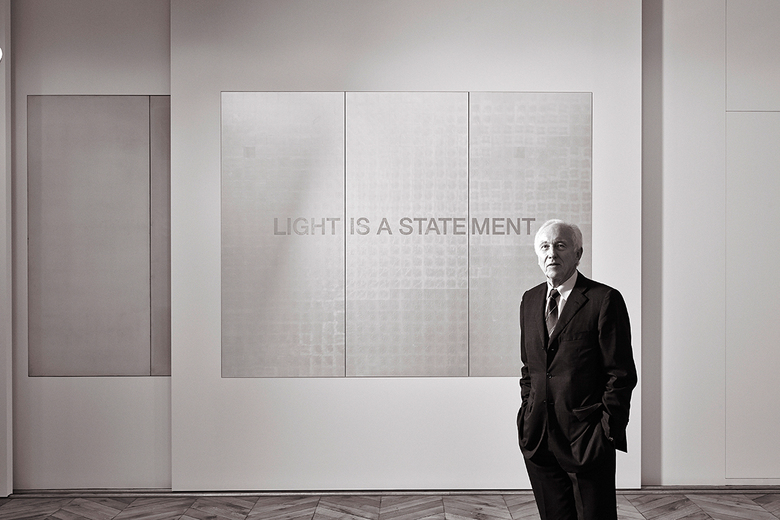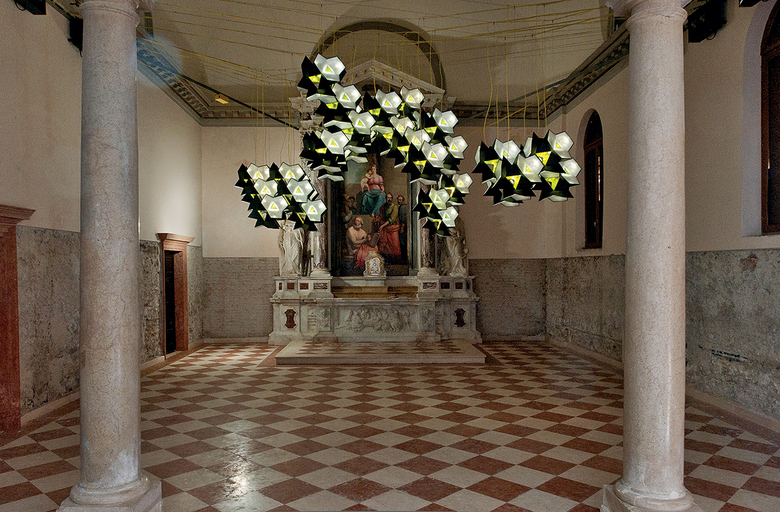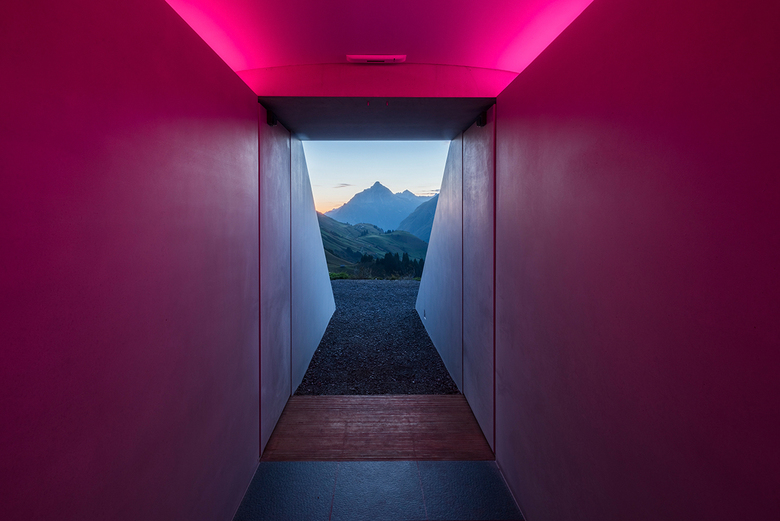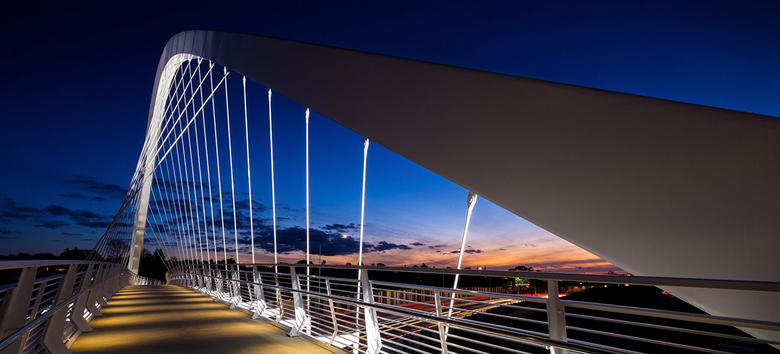Interview with Jürg Zumtobel
Jenny Keller
8. mars 2019
Jürg Zumtobel spoke with us about the past and future of his firm. (Photo: Zumtobel Group)
Jürg Zumtobel, longtime Managing Director and Chairman of the Supervisory Board of the Zumtobel Group, recalls the beginnings and the core of the family business, which today employs six and a half thousand people worldwide and has always placed architecture at the center of its activities.
We need light to see. Light has power, but no tangible presence. It has momentum, but no dimensions. You can feel it, but you can't touch it. It breaks and reflects, exposes and expands. It can accentuate things and absorb everything. Light can do so much, but is often little understood. Light must be conveyed, and this is the task the Zumtobel Group has set itself.
"If we don't succeed in creating fascinating worlds of experience, carefully created places where you can really feel comfortable, where new ideas can be found, where you can get to know new people and learn new things, then we've lost," says Jürg Zumtobel, "because then we're on a commodity level, that means we're simply selling a commodity, and that's where we're not needed." Jürg Zumtobel, the longtime Managing Director and Chairman of the Supervisory Board of the Zumtobel Group, is over 80, but his passion for light and the family business is omnipresent and unabated. "My father started with light in 1950," he says. Technical solutions were Walter Zumtobel's strength, and he was awarded numerous patents for them. In the 1950s, ballasts for fluorescent tubes provided the engineer with a brilliant idea that became the basis for a continuously flourishing company. "My father's customers were luminaire manufacturers," recalls Jürg Zumtobel, "and he then realized that he could do things better. The first complete luminaire was eventually produced in Dornbirn in 1952." This was a simple fluorescent luminaire with an integrated ballast that saved energy. Following this, business was dominated by regulations, standards, and norms.
"Starbrick" by Olafur Eliasson at the 12th Venice Architecture Biennale, 2010 (Photo: Zumtobel Group)
At the beginning of the 1980s, regulations, standards, and norms were established in the lighting business. "We always wanted to be better than the standard," explains Jürg Zumtobel, "we wanted to demonstrate how light shapes the world around us, but not all customers understood this idea." Ettore Sottsass, the Italian architect and designer, made a statement in the 1980s that changed the world of Jürg Zumtobel and shaped the philosophy of the Zumtobel Group. On the occasion of a lecture in the cupola hall of the ETH in Zurich, Sottsass allegedly said that every product had to tell a story. "Today this may sound banal and is no longer a surprise to anyone," admits Jürg Zumtobel. At that time, however, it was an aha moment for the entrepreneur. And so Zumtobel began to increasingly work with architects: The design of a luminaire should come from specialists — that is architects and designers — while the technical features of a luminaire should come from Zumtobel engineers. "The architect is the only one in the whole network of light planners, electrical planners, and other specialists with a holistic approach. And if the architect really likes something, he fights for it. An engineer does not fight with the same intensity," Jürg Zumtobel summarizes the strategy of the Dornbirn-based luminaire manufacturer, which has been successful for many years. Zumtobel is convinced that "you have to team up with people who give fresh impetus." And by that he means artists, designers, and architects.
"What fascinates me most about architecture is its versatility," raves Jürg Zumtobel, who would have loved to study architecture but wasn't good at drawing and thus studied high-frequency engineering instead. In 1961, he earned his degree and joined the family business, which expanded enormously in the 1990s through takeovers and internal growth and has meanwhile grown into a considerable company with more than 6,000 employees.
James Turrell's "Lech" Skyspace in Vorarlberg, Austria (Photo: Zumtobel Group)
The recent past has not been easy for the Zumtobel Group. Sales declines and intense price competition have severely affected profitability. Fundamental organizational and strategic changes were therefore introduced, along with restructuring and cost-cutting measures. However, blaming the market alone for the current challenges would be too short-sighted. Jürg Zumtobel explains self-critically that the company had failed to pay sufficient attention to innovations in classic luminaires and their current requirements.
The 2017/2018 business year was not the most pleasing either, but if you take a look at the annual report, a colorful work by the Austrian-American graphics duo Sagmeister and Walsh (18mb PDF), there's no reason to be pessimistic. Since 1991, states the annual report, the Zumtobel Group has been inviting internationally renowned personalities from the fields of architecture, graphic design, and art to engage with the subject of 'light' and the development of the company. Rarely has a company's annual report been such a pleasure to read. Almost an art book, such a report conveys the corporate culture of the Zumtobel Group mentioned above — "You have to convey your values to the customer" — in an excellent way and outside the corporate identity. This is exactly what the company wants to build on. The classic factors of success — technological orientation on the one hand and aesthetic competence in design and architecture on the other — must be reactivated and combined with the new requirements arising from the Internet of Things (IoT) and connectivity. The current 2018/2019 business year is regarded as a year of transition in which Zumtobel must do its homework and lay the foundations for profitable growth. 2020 will show how successfully the current strategy has been implemented.
Hendon Bridge (Photo: Zumtobel Group)
This article originally appeared as "Ein Gespräch mit Jürg Zumtobel" on German-Architects. Translation by Bianca Murphy.



